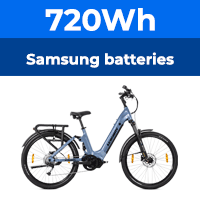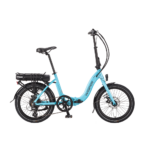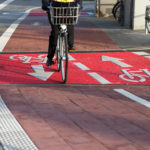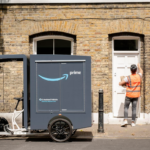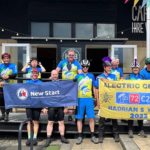I've been running a 500W 36V Cyclotricity rear hub kit with PAS for about a year and generally it seems to work as expected. Assistance is good and it will go ~20mph on the flat or up to ~24mph with hard pedalling, it will climb without cutting out, it gets decent range, i.e. it all seems fine with no obvious problems.
It does have an odd behaviour though, and I don't know if it's a fault or some sort of design condition or safety limit. On one steep descent on my way to work I hit ~30mph momentarily even without pedalling or any assistance, at which point the system goes in to error. If I try to pedal when the error is shown the motor pulses 3 times repeatedly (3 pulses at 1 second intervals, then a pause, then 3 pulses again, almost like a warning signal) and basically forces you to stop. The error can be cleared with a power cycle of the display (a KT-LCD1 with Cyclotricity's derestriction mods), and the bike behaves completely normally once again.
I think the error is code 06 (need to check next time it happens), which is 'Fault in either motor or controller' according to: https://www.cyclotricity.com/uk/error-code-06, but this seems odd given that it works all the rest of the time.
The same fault occurs on this particular downhill stretch whether pedalling or not, and also occurs if not pedalling and with assistance set to zero, i.e. it occurs even if the motor is doing nothing (I don't have a throttle fitted - it is PAS only).
I tried to reproduce this behaviour last night with my bike on a stand and observed the following:
With the battery removed, or with the motor cable disconnected, I can turn the pedals/wheel as fast as I like with minimal resistance.
With the motor lead & battery connected, and the system switched on but on zero assistance, I can only physically pedal it up to ~24mph on the display before the resistance becomes too great.
With the motor lead & batter connected, but the system switched off, it basically does the same thing - it generates significant resistance at ~24mph (screen is off but it feels the same as the above, i.e. you can’t pedal it any harder).
I physically can’t put enough force through the pedals to overcome this resistance at ~24mph, i.e. I can’t get it anywhere near the 30mph which seems to trigger the fault, so at the moment I can't reproduce it in test conditions unless I find something else to spin the wheel up really fast.
After doing a bit of reading around I have started to wonder whether one of the MOSFETs in the controller may have failed as this apparently results in resistance when connected vs less resistance when connected, but I’m surprised that the system seems to work so normally the rest of the time if part of it has failed.
As far as I can tell the Cyclotricity package is essentially a generic Chinese motor & controller with some nice connectors added and some different firmware in the display (a KT-LCD1), so I’m hoping that someone with a similar setup can tell me how theirs behaves, i.e.
If you put your bike on a stand and pedal it with zero assistance, or with the system off but fully connected including the battery, do you hit a brick-wall of resistance at a particular speed or not?
Any help or advice appreciated.
It does have an odd behaviour though, and I don't know if it's a fault or some sort of design condition or safety limit. On one steep descent on my way to work I hit ~30mph momentarily even without pedalling or any assistance, at which point the system goes in to error. If I try to pedal when the error is shown the motor pulses 3 times repeatedly (3 pulses at 1 second intervals, then a pause, then 3 pulses again, almost like a warning signal) and basically forces you to stop. The error can be cleared with a power cycle of the display (a KT-LCD1 with Cyclotricity's derestriction mods), and the bike behaves completely normally once again.
I think the error is code 06 (need to check next time it happens), which is 'Fault in either motor or controller' according to: https://www.cyclotricity.com/uk/error-code-06, but this seems odd given that it works all the rest of the time.
The same fault occurs on this particular downhill stretch whether pedalling or not, and also occurs if not pedalling and with assistance set to zero, i.e. it occurs even if the motor is doing nothing (I don't have a throttle fitted - it is PAS only).
I tried to reproduce this behaviour last night with my bike on a stand and observed the following:
With the battery removed, or with the motor cable disconnected, I can turn the pedals/wheel as fast as I like with minimal resistance.
With the motor lead & battery connected, and the system switched on but on zero assistance, I can only physically pedal it up to ~24mph on the display before the resistance becomes too great.
With the motor lead & batter connected, but the system switched off, it basically does the same thing - it generates significant resistance at ~24mph (screen is off but it feels the same as the above, i.e. you can’t pedal it any harder).
I physically can’t put enough force through the pedals to overcome this resistance at ~24mph, i.e. I can’t get it anywhere near the 30mph which seems to trigger the fault, so at the moment I can't reproduce it in test conditions unless I find something else to spin the wheel up really fast.
After doing a bit of reading around I have started to wonder whether one of the MOSFETs in the controller may have failed as this apparently results in resistance when connected vs less resistance when connected, but I’m surprised that the system seems to work so normally the rest of the time if part of it has failed.
As far as I can tell the Cyclotricity package is essentially a generic Chinese motor & controller with some nice connectors added and some different firmware in the display (a KT-LCD1), so I’m hoping that someone with a similar setup can tell me how theirs behaves, i.e.
If you put your bike on a stand and pedal it with zero assistance, or with the system off but fully connected including the battery, do you hit a brick-wall of resistance at a particular speed or not?
Any help or advice appreciated.


